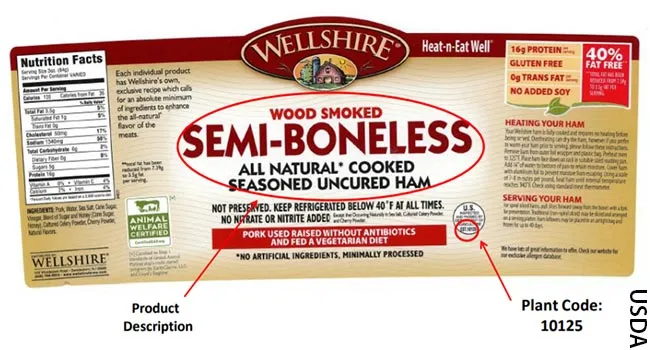Titanium Dioxide Nanoparticles: Structure, Properties, and Uses
Titanium dioxide nanoparticles continue to play a crucial role in various scientific and industrial applications. Their unique structure and properties make them indispensable

Introduction
Titanium dioxide nanoparticles are widely used in various industrial, environmental, and biomedical applications. Their unique structural, chemical, and optical properties make them a crucial component in products ranging from sunscreens to energy storage devices. This article explores the structure, properties, and diverse applications of TiO₂ nanoparticles.
Structure of Titanium Dioxide Nanoparticles
Titanium dioxide exists in three main crystalline forms:
-
Anatase: This phase exhibits superior photocatalytic activity and is widely used in applications such as water purification and self-cleaning surfaces.
-
Rutile: The most stable phase, rutile has high refractive properties and is used predominantly in coatings and pigments.
-
Brookite: Less common but known for its potential in high-performance applications due to its unique surface energy characteristics.
The structure of TiO₂ nanoparticles affects their reactivity, surface area, and overall effectiveness in various applications. Their high surface-to-volume ratio significantly enhances their chemical and physical properties compared to bulk TiO₂.
Properties of Titanium Dioxide Nanoparticles
TiO₂ nanoparticles possess several key properties that contribute to their widespread use:
Photocatalytic Activity
Titanium dioxide nanoparticles exhibit strong photocatalytic activity, meaning they can break down organic pollutants under UV light. This makes them valuable in environmental applications such as air and water purification.
High Refractive Index
The high refractive index of TiO₂, especially in its rutile form, makes it an excellent material for use in paints, coatings, and cosmetics to enhance opacity and brightness.
Chemical Stability
TiO₂ nanoparticles are chemically inert, allowing them to be used in applications where long-term stability is crucial, such as in biomedical implants and coatings.
Antibacterial Properties
Due to their ability to generate reactive oxygen species under UV exposure, TiO₂ nanoparticles have antibacterial and antiviral properties, making them suitable for use in medical coatings and disinfection applications.
Biocompatibility
Titanium dioxide is biocompatible, which allows its use in medical implants, drug delivery systems, and tissue engineering.
Applications of Titanium Dioxide Nanoparticles
The versatile properties of TiO₂ nanoparticles have led to their incorporation into numerous industries:
Cosmetics and Sunscreens
Titanium dioxide nanoparticles are a key ingredient in sunscreens due to their ability to block UV radiation effectively. Unlike larger TiO₂ particles, nanoparticles provide high transparency while maintaining UV protection.
Environmental Remediation
TiO₂ nanoparticles are used in photocatalytic water and air purification systems. Their ability to break down pollutants and bacteria under UV light helps in wastewater treatment and air purification applications.
Paints and Coatings
Titanium dioxide’s high refractive index enhances the opacity and brightness of paints, coatings, and plastics. It is widely used in commercial and industrial paints for improved durability and color stability.
Energy Storage and Conversion
In solar cells, TiO₂ nanoparticles improve efficiency by enhancing electron transport in dye-sensitized solar cells (DSSCs). They are also utilized in lithium-ion batteries to increase charge-discharge efficiency.
Biomedical Applications
TiO₂ nanoparticles are employed in drug delivery systems, orthopedic implants, and antimicrobial coatings. Their biocompatibility and stability make them suitable for a range of medical applications.
Food Industry
Titanium dioxide is used as a food additive (E171) for whitening and brightening various food products, though recent studies are evaluating its safety for consumption.
Textiles and Self-Cleaning Surfaces
Nanostructured TiO₂ coatings are applied to textiles and glass surfaces to create self-cleaning and antimicrobial properties, reducing maintenance and improving hygiene.
Challenges and Future Prospects
While TiO₂ nanoparticles offer numerous advantages, some challenges remain:
-
Toxicity Concerns: Studies on the potential health risks of inhaling or ingesting TiO₂ nanoparticles are ongoing, particularly their effects on the respiratory system and gastrointestinal tract.
-
Regulatory Considerations: Many regulatory bodies are evaluating the safe use of titanium dioxide nanoparticles, particularly in food and cosmetic applications.
-
Enhancing Photocatalytic Efficiency: Researchers are exploring doping strategies and composite materials to improve the photocatalytic efficiency of TiO₂ nanoparticles under visible light.
Conclusion
Titanium dioxide nanoparticles continue to play a crucial role in various scientific and industrial applications. Their unique structure and properties make them indispensable in fields such as environmental remediation, energy storage, and biomedical engineering. As research progresses, advancements in TiO₂ nanoparticle technology are expected to further enhance their efficiency, safety, and sustainability across industries.
What's Your Reaction?

















